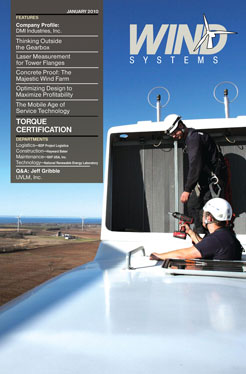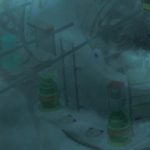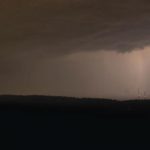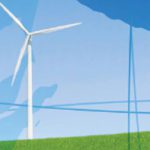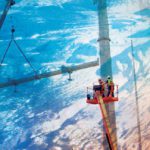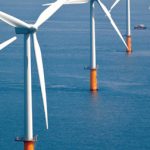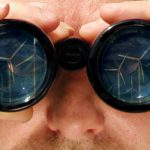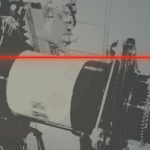Wind energy has the potential to make a major contribution toward solving the world’s energy problems, but it faces significant obstacles in improving its efficiency to the point that it can compete with fossil fuels. More mature industries, including the fossil fuel based electric power generation industry, have spent many decades evaluating different design alternatives and relentlessly focusing on those that provide the best economic performance. Being a relatively new industry, wind energy has not had the time to climb this far up the learning curve. Barring a major technological breakthrough, a key challenge is that the people in charge of the major aspects of wind turbine design—site, tower, blade, and generator design, etc.—move toward their own goals, but don’t usually have the information or tools to consider the impact of their choices on other important objectives.
This article will describe a new approach called Multidisciplinary Design and Optimization (MDAO), which links together the tools used in every aspect of wind farm and wind turbine design to explore all of the various interrelated alternatives and iterate toward a design that optimizes profitability. MDAO can be used to develop a high level view of the complete wind farm design by considering each of the major systems as a black box. It can also be used to address detailed design issues by incorporating high fidelity computer aided design (CAD) of the entire wind farm and turbine, or whatever parts that it makes sense to model. This approach can help the wind energy industry quickly make up for its relatively recent start by rapidly evaluating huge numbers of possible design alternatives to make rapid improvements in profitability.
Catching Up
The first wind turbine—developed in 1888 by Charles F. Brush in Cleveland, Ohio—had a full load capacity of 12 kW, and it was used to charge batteries. The technology was slow to gain serious commercial attention, however. In the United States there were limited applications for powering rural homesteads that were not connected to the electrical grid. These mostly ended with the growth of government sponsored rural electrification in the 1930s. During the 1950s there was research in Denmark leading to the three-bladed wind turbine, which is the predecessor to the modern Danish turbine. The modern wind turbine industry finally got off the ground in the 1970s as a result of the 1973 oil crisis, leading to a search for alternative means of energy. But the development of wind energy moved slowly for decades, with worldwide installed capacity reaching 10,000 Megawatts in 2005.
(see Fig. 1)
More recently the growth rate of the wind energy industry has increased substantially, reaching an installed capacity of nearly 30,000 Megawatts in 2008. The recent rapid growth of the wind turbine industry has not provided enough time for designs to be optimized by traditional engineering methods. What is needed is a new approach that will enable wind farm and turbine designers to rapidly consider huge numbers of possible alternatives to compress the period of time required for wind energy to quickly compete economically with carbon-based power generation.
Points to Ponder
The ideal wind farm design is dictated by a combination of technology and economics. The goals are usually to maximize energy production, minimize capital and operating costs, and comply with the constraints imposed by the site. There are many different, and often conflicting, disciplines involved in the site design process. The wind farm is typically laid out by considering various site sizes, site layouts, turbine types, and hub heights. Spacing of wind turbines on the site must be considered carefully to avoid unacceptably high wake losses. Of course, the optimum layout for the site is affected by the design of the turbines used on the site, and the optimum turbine design is also affected by the site layout.
(see Fig. 2 )
Likewise, wind turbine designers have the goal of delivering electricity at the lowest possible cost per kilowatt hour (kWh) of energy. Wind turbine blades have many similarities to helicopter rotorcraft blades and share many of their design characteristics. Taller towers increase wind turbine energy production but cost more to build, so this tradeoff must be optimized during the design process. The determination of the airfoil shape and number of blades involves questions of aerodynamic efficiency, component costs, system reliability, and aesthetics that in turn impact the site design. A small generator requires less force to turn, which makes it more efficient at low wind speeds, but it also is less efficient at high wind speeds.
One of the greatest challenges of wind turbine design is that these design decisions and many others interact in very complex ways on the overall profitability of the wind farm. Each of these decisions is typically in the hands of specialists that use a variety of rules of thumb and engineering software. Often, design variables overlap into multiple disciplines. In this case, each discipline typically provides a recommendation that is optimized based on its own analysis methods. The usually conflicting recommendations of different disciplines must be traded off against each other. There is usually no way to simultaneously evaluate the impact of the different design variables on the overall profitability of the wind farm, nor is there a practical method to search the entire design space for combinations of design variables that might provide better overall results.
Optimizing Tradeoffs
The new MDAO tools address this challenge by linking analysis tools used by all disciplines involved in wind turbine and wind farm design in automated processes that are suitable for analyzing large numbers of design alternatives. Once the model is created it can be automatically executed and data transferred from one application to the next, freeing engineers from the time-consuming and error-prone tasks of manual data conversion and data transfer. MDAO tools provide optimization routines that greatly reduce the number of analysis runs required to explore a design space and identify the best design alternative. Multidisciplinary optimization can simultaneously evaluate a large number of designs against a wide range of objectives such as revenues under various wind conditions, initial capital investment, and life-cycle costs. This makes it possible to provide an objective answer to the question of which design is best.
(see Fig. 3)
MDAO can easily be applied to the wind farm site design process. The inputs to the model are the wind profile of the site, the price received for power generated by the farm, the geometry of the available site, and the design of the tower, blade, and generator. In this case the tower, blade, and generators are represented by relatively simple black box models that yield their performance as a function of their cost. The question that we are trying to resolve is what number, siting, and type of wind turbines on the site will optimize the long-term profitability of the site while meeting noise and environmental constraints.
(see Fig. 4)
The software initially shows a graphic depiction of the model of the wind farm and lists the various design inputs. The MDAO tool can then be configured to optimize the design. The model is parameterized so that the design variables can be automatically controlled by the MDAO tool. Trade study tools can be used to run the integrated analysis models repeatedly by manipulating these design variables to generate vast data for alternative designs. The design space can then be explored using visualization tools to understand important design trends such as trade-offs between the capital costs and operating costs to produce a specified energy output. When promising designs are found, sensitivity analysis can be performed to identify potential risks and opportunities for improvement.
Fidelity in Design
In the MDAO approach, the major subsystems of the wind turbine were considered as black boxes. This type of analysis would typically be performed as part of the site feasibility study. Later, the fidelity of the optimization process could be increased to optimize the wind turbine design at a more detailed level. MDAO makes it possible to move fidelity forward in the design process, enabling site planners and wind turbine designers to make better choices between alternative design concepts at a point in the process when many critical and irreversible design decisions are made. Moving fidelity forward also reduces product development time and expense by enabling the concept design and detailed design phases to largely be conducted simultaneously.
MDAO can advance wind power systems technology by encompassing every aspect of wind farm and turbine design to integrate any or all of the applications used in the design process. MDAO can improve the profitability of wind farms by enabling trade studies that can be used at every stage of the design and engineering process to make better tradeoffs between the many conflicting objectives that are involved in wind farm and wind turbine design.



















